 W
WThe Atlantic Ocean is the second-largest of the world's oceans, with an area of about 106,460,000 km2 (41,100,000 sq mi). It covers approximately 20 percent of Earth's surface and about 29 percent of its water surface area. It is known to separate the "Old World" from the "New World" in European perception of the World.
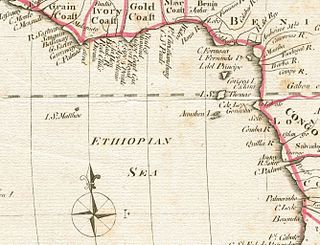 W
WAethiopian, Æthiopian, Æthiopic or Ethiopian Sea or Ocean was the name given to the southern half of the Atlantic Ocean in classical geographical works. The name appeared in maps from ancient times up to the turn of the 19th century.
 W
WAfrican Slave Trade Patrol was part of the suppression of the Atlantic slave trade between 1819 and the beginning of the American Civil War in 1861. Due to the abolitionist movement in the United States, a squadron of U.S. Navy warships and Cutters were assigned to catch slave traders in and around Africa. In 42 years about 100 suspected slave ships were captured.
 W
WThere were many animals aboard the RMS Titanic during her disastrous maiden voyage, which ended with the ship sinking on 15 April 1912 after colliding with an iceberg.
 W
WAtlantic history is a specialty field in history that studies the Atlantic World in the early modern period. The Atlantic World was created by the discovery of a new land by Europeans, and Atlantic History is the study of that world. It is premised on the idea that, following the rise of sustained European contact with the New World in the 16th century, the continents that bordered the Atlantic Ocean—the Americas, Europe, and Africa—constituted a regional system or common sphere of economic and cultural exchange that can be studied as a totality.
 W
WThe Atlantic World comprises the interactions among the peoples and empires bordering the Atlantic Ocean rim from the beginning of the Age of Discovery to the early 21st century. Atlantic history is split between three different contexts: trans-Atlantic history, meaning the international history of the Atlantic World; circum-Atlantic history, meaning the transnational history of the Atlantic World; and cis-Atlantic history within an Atlantic context. The Atlantic slave trade continued into the 19th century, but the international trade was largely outlawed in 1807 by Britain. Slavery ended in 1865 in the United States and in the 1880s in Brazil (1888) and Cuba (1886). While some scholars stress that the history of the "Atlantic World" culminates in the "Atlantic Revolutions" of the late 18th early 19th centuries, the most influential research in the field examines the slave trade and the study of slavery, thus in the late-19th century terminus as part of the transition from Atlantic history to globalization seems most appropriate.
 W
WAtlantica is an ancient continent that formed during the Proterozoic about 2,000 million years ago from various 2 Ga cratons located in what is now West Africa and eastern South America. The name, introduced by Rogers 1996, was chosen because the continent opened up to form the South Atlantic Ocean.
 W
WThe Blockade of Africa began in 1808 after the United Kingdom outlawed the Atlantic slave trade, making it illegal for British ships to transport slaves. The Royal Navy immediately established a presence off Africa to enforce the ban, called the West Africa Squadron. Although the ban initially applied only to British ships, Britain negotiated treaties with other countries to give the Royal Navy the right to intercept and search their ships for slaves. The 1807 Act Prohibiting Importation of Slaves abolished the intercontinental slave trade in the United States but the ban was not widely enforced.
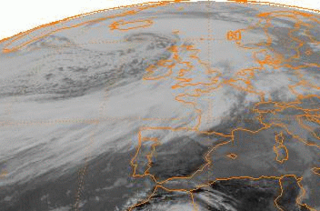 W
WThe Braer Storm was the most intense extratropical cyclone ever recorded over the northern Atlantic Ocean. Developing as a weak frontal wave on 8 January 1993, the system moved rapidly northeast. The combination of the absorption of a second low-pressure area to its southeast, a stronger than normal sea surface temperature differential along its path, and the presence of a strong jet stream aloft led to a rapid strengthening of the storm, with its central pressure falling to an estimated 913 mb (27.0 inHg) on 11 January. Its strength was well predicted by forecasters in the United Kingdom, and warnings were issued before the low initially developed.
 W
WBristol, a port city in south-west England, was involved in the transatlantic slave trade. Bristol's part in the trade was prominent in the 17th and 18th centuries as the city's merchants used their position to gain involvement. It is estimated that over 500,000 enslaved African people were traded by Bristol merchants.
 W
WThe Capture of the brig Brillante occurred around 1832 and was considered a significant feat in the Blockade of Africa. Brillante was a slave ship that the Royal Navy succeeded in capturing after two failed attempts. The brig had a crew of sixty men and was armed with ten guns. Brillante was under the command of an English captain named Homans when she was seized. Homans was an experienced slaver who in ten cruises had landed 5,000 slaves on the coasts of Brazil and Cuba. Brillante reportedly fought at least two battles against the British anti-slavery patrols. She allegedly forced the crew of one British cruiser to abandon ship after a bloody action and on a different occasion, she repulsed boats from a Royal Navy sloop-of-war.
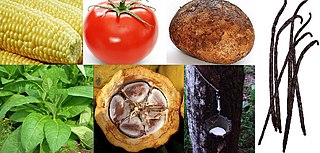 W
WThe Columbian exchange, also known as the Columbian interchange, named after Christopher Columbus, was the widespread transfer of plants, animals, culture, human populations, technology, diseases, and ideas between the Americas, West Africa, and the Old World in the 15th and 16th centuries. It also relates to European colonization and trade following Christopher Columbus's 1492 voyage. Invasive species, including communicable diseases, were a byproduct of the exchange. The changes in agriculture significantly altered global populations. The most significant immediate impact of the Columbian exchange was the cultural exchanges and the transfer of people between continents.
 W
WThe Dominion Line was a trans-atlantic passenger line founded in 1870 as the Liverpool & Mississippi Steamship Co., with the official name being changed in 1872 to the Mississippi & Dominion Steamship Co Ltd. The firm was amalgamated in 1902 into the International Mercantile Marine Co..
 W
WGberefu Island also known as Point of No Return is a populated historical island located in Badagry, a town and local government area of Lagos State, South-Western Nigeria. Symbolized by two poles slightly slanted towards each other and facing the Atlantic Ocean, the island was a major slave port after it was opened in 1473 during the Trans Atlantic Slave Trade era. According to Nigerian historians, as many as 10,000 slaves were believed to have been shipped to the Americas between 1518 and 1880 from the island.
 W
WThe Great Divergence or European miracle is the socioeconomic shift in which the Western world overcame pre-modern growth constraints and emerged during the 19th century as the most powerful and wealthy world civilization, eclipsing Mughal India, Qing China, the Islamic World, and Tokugawa Japan.
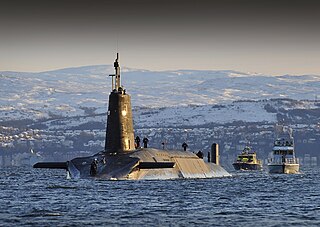 W
WThe submarines HMS Vanguard and Triomphant collided in the Atlantic Ocean in the night between 3–4 February 2009. Both are nuclear-powered ballistic missile submarines. The Royal Navy's HMS Vanguard and the French Navy's Triomphant both sustained damage, but no injuries or radioactivity releases were reported. At the time of the collision, both vessels were submerged and moving "at very low speed" according to the UK Ministry of Defence. Both are equipped with active and passive sonar, although only the latter is used on an operational patrol.
 W
WThe Ivory Coast expedition, or the Liberia expedition, was a naval operation in 1842, launched by the United States against the West African Bereby people. After the attacks on the merchant ships Mary Carver and Edward Barley, the American Congress approved a punitive expedition to the area and placed Commodore Matthew C. Perry in command. The expedition was successful in exacting redress by destroying the fortified town of Little Bereby and by killing the chief responsible for the attacks on American shipping.
 W
WThe lifeboats of the RMS Titanic played a crucial role in the disaster of 14–15 April 1912. One of the ship's legacies was that she had 20 lifeboats that in total could only accommodate 1,178 people, despite the fact that there were approximately 2,208 on board. RMS Titanic had a maximum capacity of 3,547 passengers and crew.
 W
WThis is a list of notable crossings of the Atlantic Ocean.
 W
WThe Matthew is a replica of a caravel sailed by John Cabot in 1497 from Bristol to North America, presumably Newfoundland.
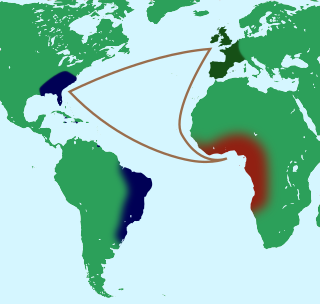 W
WThe Middle Passage was the stage of the triangular trade in which millions of Africans were forcibly transported to the New World as part of the Atlantic slave trade. Ships departed Europe for African markets with manufactured goods, which were traded for purchased or kidnapped Africans, who were transported across the Atlantic as slaves; the enslaved Africans were then sold or traded for raw materials, which would be transported back to Europe to complete the voyage. The First Passage was the transportation of captives (slaves) to the African ports, such as Elmina, where they would be loaded onto ships. The Final Passage was the journey from the port of disembarkation, such as Charleston, to the plantation or other destination where they would be put to work. The Middle Passage across the Atlantic joined these two. Voyages on the Middle Passage were large financial undertakings, generally organized by companies or groups of investors rather than individuals.
 W
WInfante Dom Henrique of Portugal, Duke of Viseu, better known as Prince Henry the Navigator, was a central figure in the early days of the Portuguese Empire and in the 15th-century European maritime discoveries and maritime expansion. Through his administrative direction, he is regarded as the main initiator of what would be known as the Age of Discovery. Henry was the fourth child of the Portuguese king John I, who founded the House of Aviz.
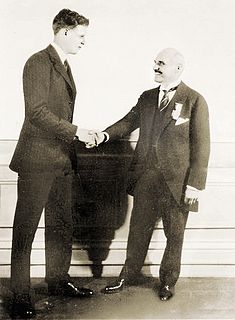 W
WThe Orteig Prize was a reward offered to the first Allied aviator(s) to fly non-stop from New York City to Paris or vice versa. Several famous aviators made unsuccessful attempts at the New York–Paris flight before the relatively unknown American Charles Lindbergh won the prize in 1927 in his aircraft Spirit of St. Louis. However, a number of lives were lost by men who were competing to win the prize. Six men died in three separate crashes, and another three were injured in a fourth crash. The Prize occasioned considerable investment in aviation, sometimes many times the value of the prize itself, and advancing public interest and the level of aviation technology.
 W
WPluricontinentalism was a geopolitical concept, positing that Portugal was a transcontinental country and a unitary nation-state consisting of continental Portugal and its overseas provinces.
 W
WThe Nantes slave trade resulted in the deportation, from the late 17th to the beginning of the 19th century, of more than 500,000 black African slaves into French ownership in the Americas, mainly in the Antilles. With 1,744 slave voyages, Nantes, France, was the principal French slave-trading port for the duration of this period. The Slave Trade was explicitly encouraged by the royal family and described by the church as an "ordinary occupation."
 W
WThe Atlantic slave trade, transatlantic slave trade, or Euro-American slave trade involved the transportation by slave traders of various enslaved African people, mainly to the Americas. The slave trade regularly used the triangular trade route and its Middle Passage, and existed from the 16th to the 19th centuries. The vast majority of those who were enslaved and transported in the transatlantic slave trade were people from Central and West Africa, who had been sold by other West Africans, or by half-European "merchant princes" to Western European slave traders, who brought them to the Americas. Except for the Portuguese, European slave traders generally did not participate in the raids because life expectancy for Europeans in sub-Saharan Africa was less than one year during the period of the slave trade. The South Atlantic and Caribbean economies were particularly dependent on labour for the production of sugarcane and other commodities. This was viewed as crucial by those Western European states that, in the late 17th and 18th centuries, were vying with each other to create overseas empires.
 W
WVoyages: The Trans-Atlantic Slave Trade Database is a database run by researchers at Emory University which aims to present all documentary material pertaining to the transatlantic slave trade. It is a sister project to African Origins.
 W
WDuring the Spanish colonization of the Americas, the Spanish Main was the collective term for the parts of the Spanish Empire that were on the mainland of the Americas and had coastlines on the Caribbean Sea or Gulf of Mexico. The term was used to distinguish those regions from the numerous islands Spain controlled in the Caribbean, which were known as the Spanish West Indies.
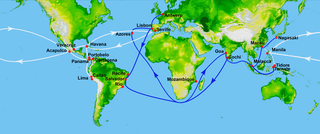 W
WThe Spanish treasure fleet, or West Indies Fleet Spanish: Flota de Indias, was a convoy system of sea routes organized by the Spanish Empire from 1566 to 1790, which linked Spain with its territories in the Americas across the Atlantic. The convoys were general purpose cargo fleets used for transporting a wide variety of items, including agricultural goods, lumber, various metal resources such as silver and gold, gems, pearls, spices, sugar, tobacco, silk, and other exotic goods from the overseas territories of the Spanish Empire to the Spanish mainland. Spanish goods such as oil, wine, textiles, books and tools were transported in the opposite direction. The West Indies fleet was the first permanent transatlantic trade route in history. Similarly, the Manila galleons were the first permanent trade route across the Pacific. The Spanish West and East Indies fleets must be counted as among the most successful naval operations in history and from a commercial point of view made possible many key components of today's global economic system.
 W
WTransatlantic telegraph cables were undersea cables running under the Atlantic Ocean used for telegraph communications. Telegraphy is now an obsolete form of communication and the cables have long since been decommissioned, but telephone and data are still carried on other transatlantic telecommunications cables. The first cable was laid in the 1850s across the floor of the Atlantic from Telegraph Field, Foilhommerum Bay, Valentia Island in western Ireland to Heart's Content in eastern Newfoundland. The first communications occurred August 16, 1858, reducing the communication time between North America and Europe from ten days—the time it took to deliver a message by ship—to a matter of minutes.
 W
WTriangular trade or triangle trade is a historical term indicating trade among three ports or regions. Triangular trade usually evolves when a region has export commodities that are not required in the region from which its major imports come. Triangular trade thus provides a method for rectifying trade imbalances between the above regions.
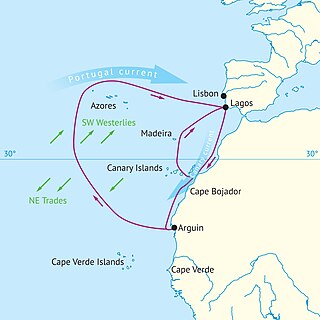 W
WVolta do mar, volta do mar largo, or volta do largo is a navigational technique perfected by Portuguese navigators during the Age of Discovery in the late fifteenth century, using the dependable phenomenon of the great permanent wind circle, the North Atlantic Gyre. This was a major step in the history of navigation, when an understanding of winds in the age of sail was crucial to success: the European sea empires would never have been established had the Europeans not figured out how the trade winds worked.